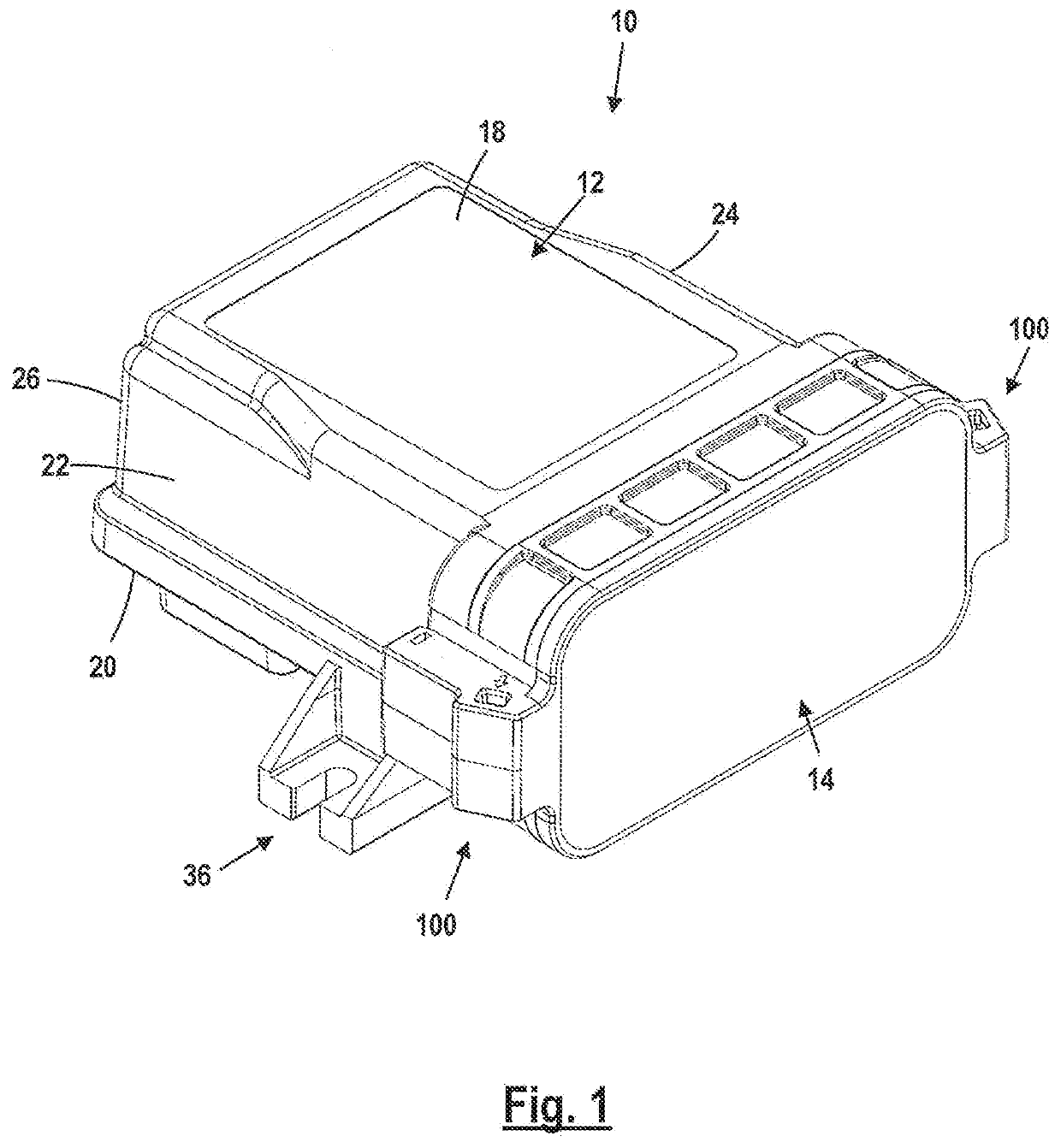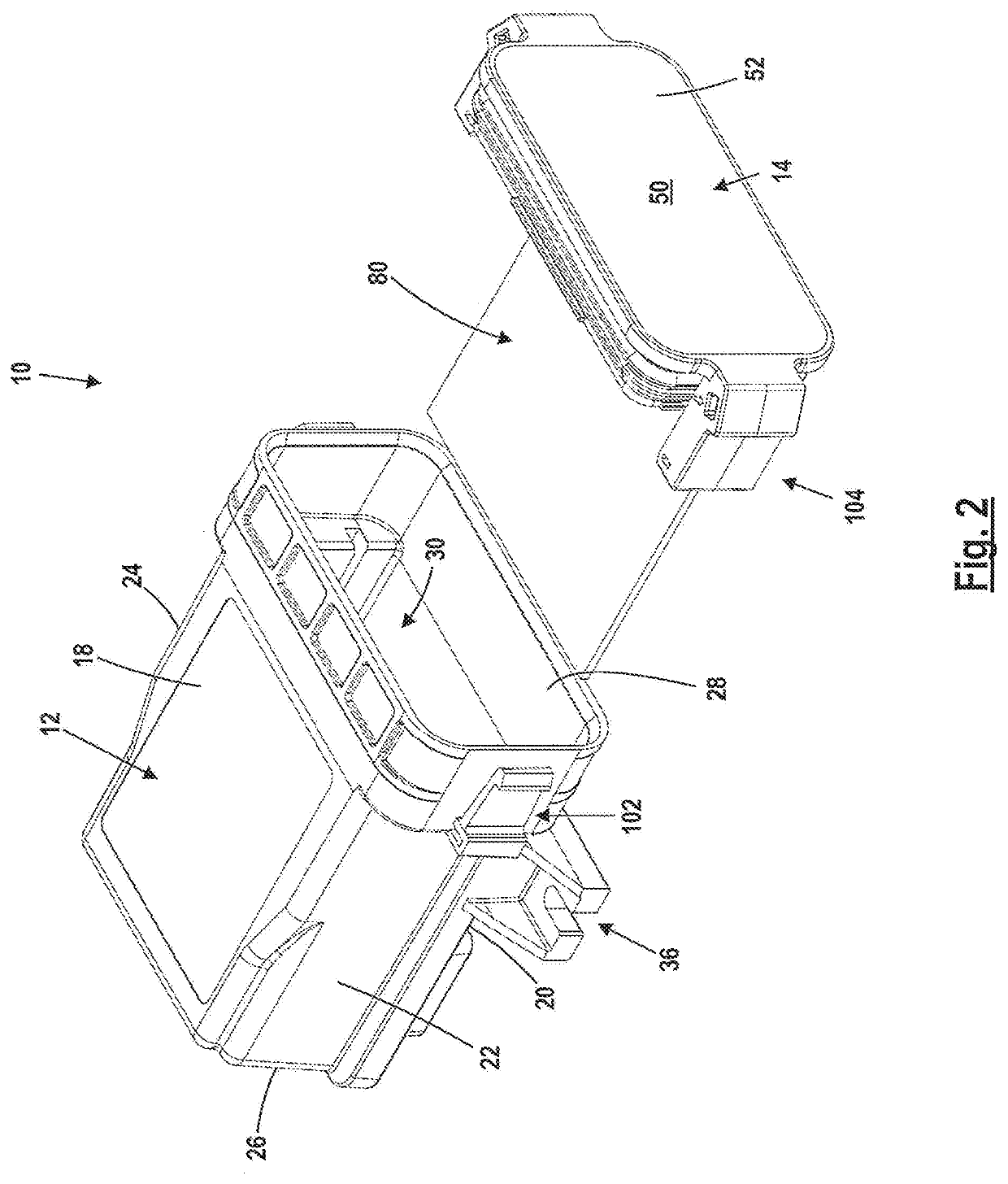Electrical Component Enclosure and Method of Use
a technology of electrical components and enclosures, applied in the direction of printed circuit board receptacles, electrical apparatus casings/cabinets/drawers, casings/cabinets/drawers details, etc., can solve the problems of difficult and time-consuming process of using tools to actuate latch components, difficulty in visual confirmation of component engagement and actuation by tool blades, etc., to improve the effect of latch actuation and lid removal
- Summary
- Abstract
- Description
- Claims
- Application Information
AI Technical Summary
Benefits of technology
Problems solved by technology
Method used
Image
Examples
Embodiment Construction
[0032]FIG. 1 shows an electrical component enclosure assembly 10 having an enclosure body 12 and an enclosure lid or faceplate 14. Enclosure body 12 and enclosure faceplate 14 may each be molded from plastic, other insulating materials or formed from metal.
[0033]As shown in the figures, enclosure body 12 is generally rectangular in shape and is made up of five body walls: top wall 18, bottom wall 20, side walls 22, 24, and rear wall 26. Enclosure mouth opening 28 leads into enclosure internal cavity 30. The surrounding body walls define cavity 30 which has a generally rectangular shape, having a major axis 32 extending from the enclosure mouth 28 to rear wall 26 and a minor axis 34 extending between side walls 22, 24. Minor axis 34 extends generally parallel to enclosure mouth opening 28.
[0034]Two enclosure assembly feet 36 extend from the bottom of body 12 proximate enclosure body side walls 22, 24 and enclosure body bottom wall 20. Each foot 36 is generally rectangular in shape an...
PUM
 Login to View More
Login to View More Abstract
Description
Claims
Application Information
 Login to View More
Login to View More - R&D
- Intellectual Property
- Life Sciences
- Materials
- Tech Scout
- Unparalleled Data Quality
- Higher Quality Content
- 60% Fewer Hallucinations
Browse by: Latest US Patents, China's latest patents, Technical Efficacy Thesaurus, Application Domain, Technology Topic, Popular Technical Reports.
© 2025 PatSnap. All rights reserved.Legal|Privacy policy|Modern Slavery Act Transparency Statement|Sitemap|About US| Contact US: help@patsnap.com



